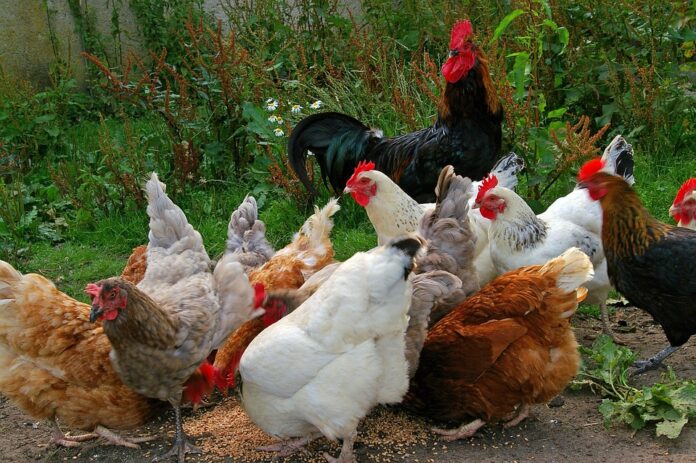Introduction
The poultry industry is experiencing a dynamic shift as consumer preferences evolve, driven by health consciousness, sustainability, and changing lifestyles. These trends are reshaping the landscape of poultry production, processing, and distribution. This report delves into the top ten consumer demands that are currently influencing the poultry industry, supported by relevant data, financial insights, and industry examples.
1. Health and Wellness
Consumer interest in health and wellness is a primary driver in the poultry market. According to a report by the Global Market Insights, the global poultry market is expected to reach USD 413 billion by 2027, growing at a CAGR of 5.5%. This growth is largely attributed to the rising demand for lean protein sources, with poultry being favored for its lower fat content compared to red meat. Consumers are increasingly looking for organic, free-range, and antibiotic-free poultry options, which have seen a 20% increase in sales over the past year alone.
2. Sustainability and Ethical Practices
Sustainability is no longer just a trend; it has become a consumer expectation. A survey conducted by Nielsen found that 66% of global consumers are willing to pay more for sustainable brands. In the poultry industry, this translates to increased demand for environmentally friendly sourcing and humane treatment of animals. Major companies like Perdue Farms have responded by implementing rigorous animal welfare standards and reducing their carbon footprints, ultimately enhancing their brand loyalty.
3. Convenience and Ready-to-Eat Options
The rise of busy lifestyles has led to an increased demand for convenience foods. Ready-to-eat and pre-cooked poultry products have surged, with the market projected to grow by 4.8% annually through 2025. Brands like Tyson Foods have capitalized on this trend by launching a variety of frozen, ready-to-cook poultry products that cater to consumers seeking quick meal solutions without sacrificing quality.
4. Transparency and Clean Labels
Consumers are increasingly demanding transparency regarding the origins and ingredients of their food. The clean label movement has gained momentum, with more than 70% of consumers looking for products with minimal ingredients. This demand has led poultry companies to disclose sourcing information and ingredient lists clearly on packaging. Brands such as Bell & Evans have built their reputation on transparency, providing consumers with detailed information about their farming practices.
5. Plant-Based Alternatives
The rise of plant-based diets has prompted poultry producers to consider alternative protein sources. Market data indicates that the plant-based protein market is expected to reach USD 74 billion by 2027, which has influenced traditional poultry companies to innovate. For instance, companies like Beyond Meat are expanding their product lines to include plant-based chicken alternatives, appealing to flexitarian consumers who are reducing meat consumption.
6. Flavor and Innovation
With the culinary landscape continually evolving, consumers are seeking unique flavors and innovative products. Poultry companies are responding by introducing diverse seasoning options and cooking methods. The flavored chicken market has seen a 15% increase, with products like spicy, smoked, and herb-infused chicken gaining popularity. Brands such as Frank’s RedHot have partnered with poultry producers to create co-branded offerings that resonate with consumers looking for exciting taste experiences.
7. Local Sourcing and Support for Farmers
The “buy local” movement has significantly impacted consumer purchasing decisions. Data from the USDA shows that local food sales reached USD 12 billion in 2021, indicating a growing preference for locally sourced poultry products. Consumers are increasingly supporting local farmers, leading to a surge in farmers’ markets and local poultry brands. Companies like Blue Apron are leveraging this trend by sourcing their poultry from local farms, thereby enhancing community ties and building consumer trust.
8. Food Safety and Quality Assurance
Food safety remains a paramount concern for consumers, particularly in the wake of global health crises. A survey by the International Food Information Council highlights that 85% of consumers prioritize food safety when making purchasing decisions. Poultry producers are responding by implementing stringent quality assurance measures and certifications, such as HACCP and USDA inspections. Brands like Foster Farms have invested in advanced processing technologies to ensure the highest safety standards are met.
9. Digital Engagement and E-Commerce
The digital transformation has also affected the poultry industry, with consumers increasingly turning to online shopping for their food needs. E-commerce for poultry products grew by 50% during the pandemic, as consumers sought safe and convenient shopping options. Companies like Perdue Farms have expanded their online presence, offering direct-to-consumer sales and subscription services to meet this rising demand.
10. Affordability
Despite the growing trend towards premium products, affordability remains a key consumer demand. According to the USDA, the average retail price of chicken has increased by 10% over the past year, making price sensitivity a critical factor for many consumers. Poultry producers are balancing cost and quality by streamlining operations and utilizing technology to reduce expenses, thereby offering competitive pricing without compromising product quality.
Conclusion
The poultry industry is at a crossroads, driven by changing consumer demands that emphasize health, sustainability, convenience, and innovation. Companies that adapt to these trends and prioritize transparency, quality, and consumer engagement are likely to thrive in this evolving market. As the industry progresses, understanding and responding to these consumer demands will be essential for maintaining competitive advantage and ensuring long-term growth.
[Read More: Global Poultry Industry Report 2025: Trends, Challenges, and Future Outlook Across the Value Chain]




